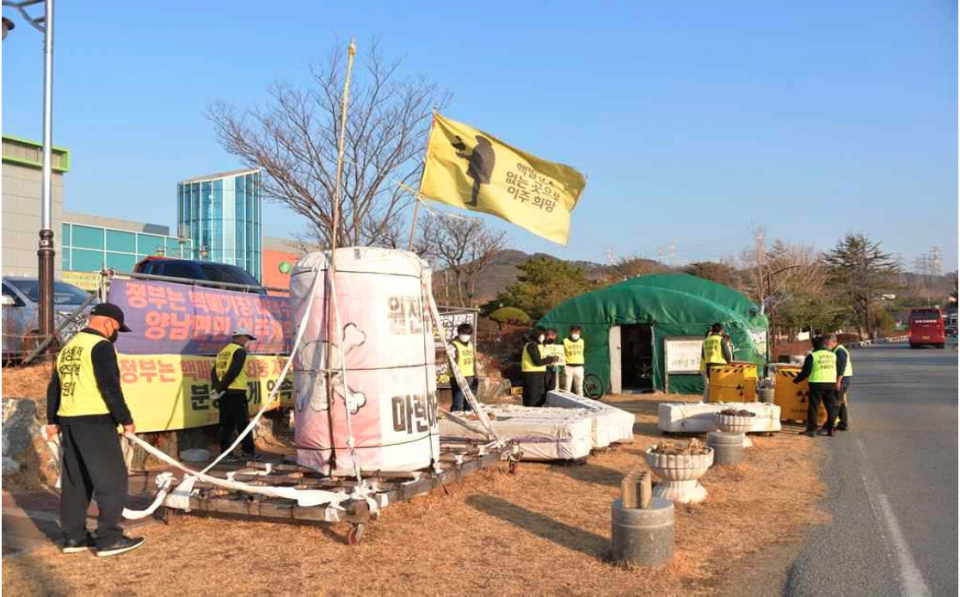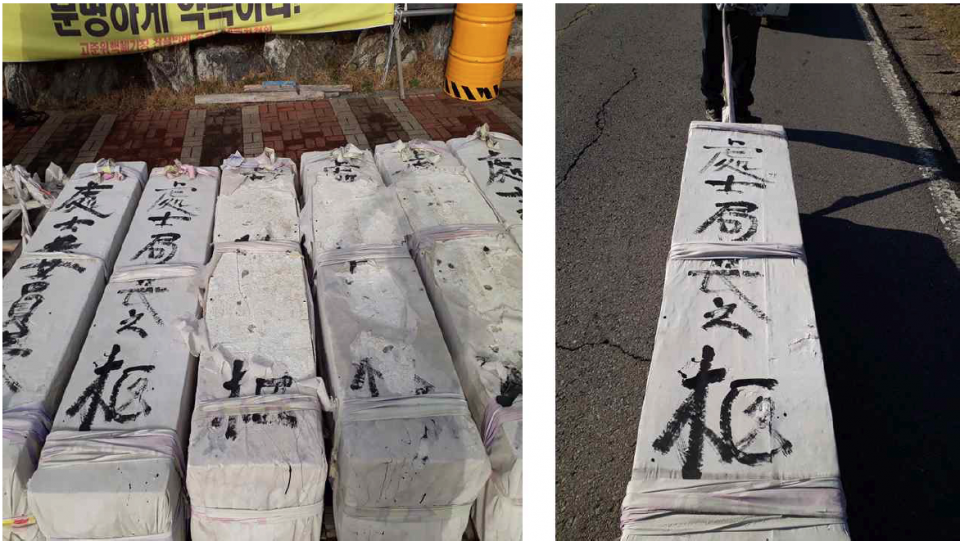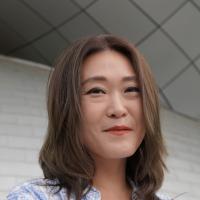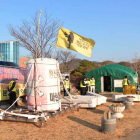South Korea currently has 24 nuclear reactors that provide about 26 percent of its electricity. According to 2020 statistics, the country ranked fifth for its nuclear energy production among the nuclear power producers around the globe; and it has the highest number of nuclear reactors per square kilometers. These impressive statistics originate from the governmental policy in the twentieth century and early 2000s. During the post-World War II years, nuclear technology was seen as the technology of the US, which liberated Korea from Japanese colonialism through nuclear bombs. For South Koreans, nuclear energy was the symbol of the ultimate progress of the nation that was modeled after that of the United States. As early as 1955, South Korea began its research on nuclear energy after it signed the “Agreement for Cooperation between the Government of the Republic of Korea and the Government of the United States of America Concerning Civil Use of Atomic Energy.” More recently, since 1997, the Kim Young-sam* administration (1993–1998) began to promote nuclear power as the future of environmentally-friendly energy, and the schools and local governments spread the rosy outlook that nuclear power plants would facilitate the further modernization of South Korea.
The South Korean government’s and public’s positive attitude toward nuclear energy dramatically shifted when the Fukushima Daiichi Nuclear Disaster (2011) took place in neighboring Japan. The public scrutiny of and anti-nuclear movement at Wolsong Nuclear Complex were vitalized. In this context, the residents, who live only 914 meters away from Wolsong Nuclear Power Complex, have continued a weekly funeral procession protest for more than six years since 2014, asking for government reparations and support for their relocation. We introduce the case of Wolsong, drawing on research by WooChang Kim, who interviewed the residents who are participating in the protest. In the interviews, the residents lamented that they had been deceived by the government, and the current life around the nuclear plants is “like a living death.”
In the past ten years, the lives of residents have completely changed. In this post-Fukushima era, the impact of nuclear facilities has been reassessed. One of the earliest nuclear power plants in Gyeongju, a city in the southeast of the country, Wolsong Power Plant Complex (1983–), had been a symbol of progress, safety, and clean energy. However, the promise of safety that the government and Korea Hydro & Nuclear Power Co., Ltd (KNHP) gave to the residents was overshadowed by the visible health risk and a corruption scandal that threatened the safety of the nuclear plants. For instance, the nearest town from the nuclear plants witnessed a disproportionate number of cancer patients; particularly, 618 thyroid cancer patients from the area are currently pursuing a class action lawsuit against KNHP. Furthermore, in 2012 and 2013, the police arrested eight KNHP employees for corruption. These employees had forged documents to purchase low-quality maintenance parts for the nuclear power plants and received bribes from the production company for 10 years. In addition, in 2013, a KNHP employee was caught under the influence of illegal narcotic drugs during his work hours. After the corruption and danger of the nuclear plants were revealed, the residents organized in 2014 to demand the government support resident relocation.
To make things worse, a 5.8 magnitude earthquake occurred in Gyeongju on 12 September 2016—the strongest seismic activity since seismological observation began in South Korea in 1978. Following the alarming Gyeongju earthquake, congress reexamined the seismic activity data on the southern coast of South Korea. As a result, Myung-Gil Choi, a Democratic Party of Korea congressman, discovered that the frequency of earthquakes in the area has increased since the Fukushima disaster, possibly indicating its impact on the adjacent South Korean seismic fault. Environmental scientists suspect that the initial inspection by the government before the congress scrutiny underestimated the potential danger of an active fault (Eupcheon Fault) near Wolsong. Between 2010 and 2020, 226 earthquakes were observed within the 30-kilometer radius of the Wolsong Nuclear Power Complex. As the real estate value has already plummeted in their town, the mobility of the residents has been hampered—selling their homes and leaving is no longer a possibility. Forced to continue their daily lives under the danger of the nuclear radiation and potential accidents, the protest is the last resort of the residents. They would like to leave Wolsong due to fear of radiation and anxiety of chronic pollution diseases such as Onsan Disease, which affected hundreds of residents of the nearby city of Ulsan due to industrial pollution during the first half of 1980s.
Every Monday, the protestors march toward the Wolsong Nuclear Power Complex in black clothes, dragging coffins on which their names are written. A bier that carries a miniature nuclear reactor accompanies the procession. The protestors sing Korean traditional requiem chants: ie-go, ie-go. The ominous wailing chants made the other residents uncomfortable. The protestors stopped chanting after they realized that the nearby elementary school children were imitating the chant. That said, the children themselves may be singing the requiem in the future since their lives will also be affected by the Wolsong Nuclear Power Complex. The KNHP plans to complete the construction of high-level radioactive waste storage facilities in the area, as the current storage facility will reach its capacity by 2022. With urgency, the protestors are asking for accountability and a solution.
* Regarding surname and first name order, the authors followed Anglo-European style order, which places first name before surname (e.g., Minjung [first name] Noh [last name]). However, when referring to the Kim Young-sam administration, the authors followed the widely-accepted convention to write the surname of the president first.
How to cite
Noh, Minjung, and Shinyoung Kim. “Hostage to Nuclear Power Plants: Weekly Funeral Procession Protest at the Wolsong Nuclear Power Plants, Gyeongju, South Korea.” Environment & Society Portal, Arcadia (Summer 2022), no. 11. Rachel Carson Center for Environment and Society. doi:10.5282/rcc/9438.
ISSN 2199-3408
Environment & Society Portal, Arcadia
 This work is licensed under a Creative Commons Attribution 4.0 International License.
This work is licensed under a Creative Commons Attribution 4.0 International License.
2022 Minjung Noh and Shinyoung Kim
This refers only to the text and does not include any image rights.
Please click on the images to view their individual rights status.
- Jang, Yeonju, and Eunil Park. “Social Acceptance of Nuclear Power Plants in Korea: The Role of Public Perceptions Following the Fukushima Accident.” Renewable and Sustainable Energy Reviews 128 (2020): 109894. https://doi.org/10.1016/j.rser.2020.109894.
- Jasanoff, Sheila, and Sang-Hyun Kim. “Containing the Atom: Sociotechnical Imaginaries and Nuclear Power in the United States and South Korea.” Minerva 47, 119 (2009). https://doi.org/10.1007/s11024-009-9124-4.
- Kim, Max S. “How Greed and Corruption Blew Up South Korea’s Nuclear Industry.” MIT Technology Review, 22 April 2019. https://www.technologyreview.com/2019/04/22/136020/how-greed-and-corruption-blew-up-south-koreas-nuclear-industry/.
- Kim, WooChang and SunJin Yun. “Why Do They Pull the Death Carriage : Revealing the ‘Slow Violence’ Suffered by the Residents of the Closest Neighborhood of Wolsong Nuclear Power Plants.” Korean Journal of Oral History 12, no. 2 (2021): 139–89.
- Woo, JongRoul, HyungBin Moon, Jongsu Lee, and Jinyong Jang. “Public Attitudes Toward the Construction of New Power Plants in South Korea.” Energy & Environment 28, no. 4 (2017): 499–517.











